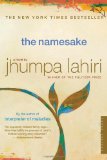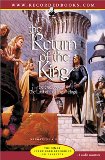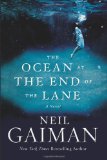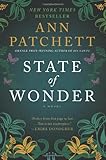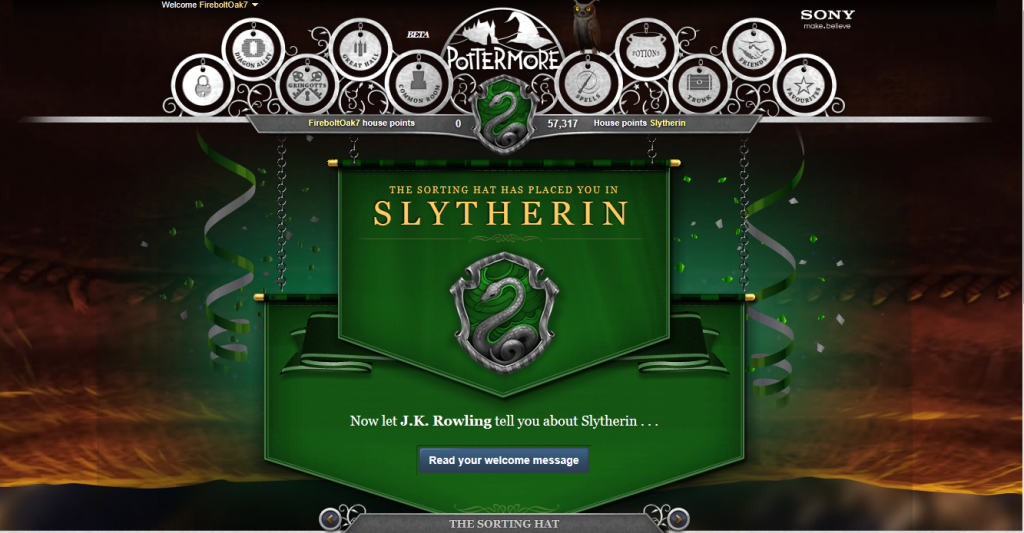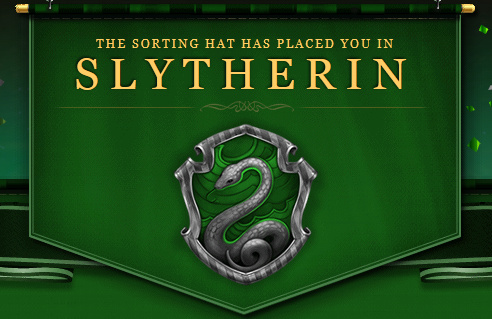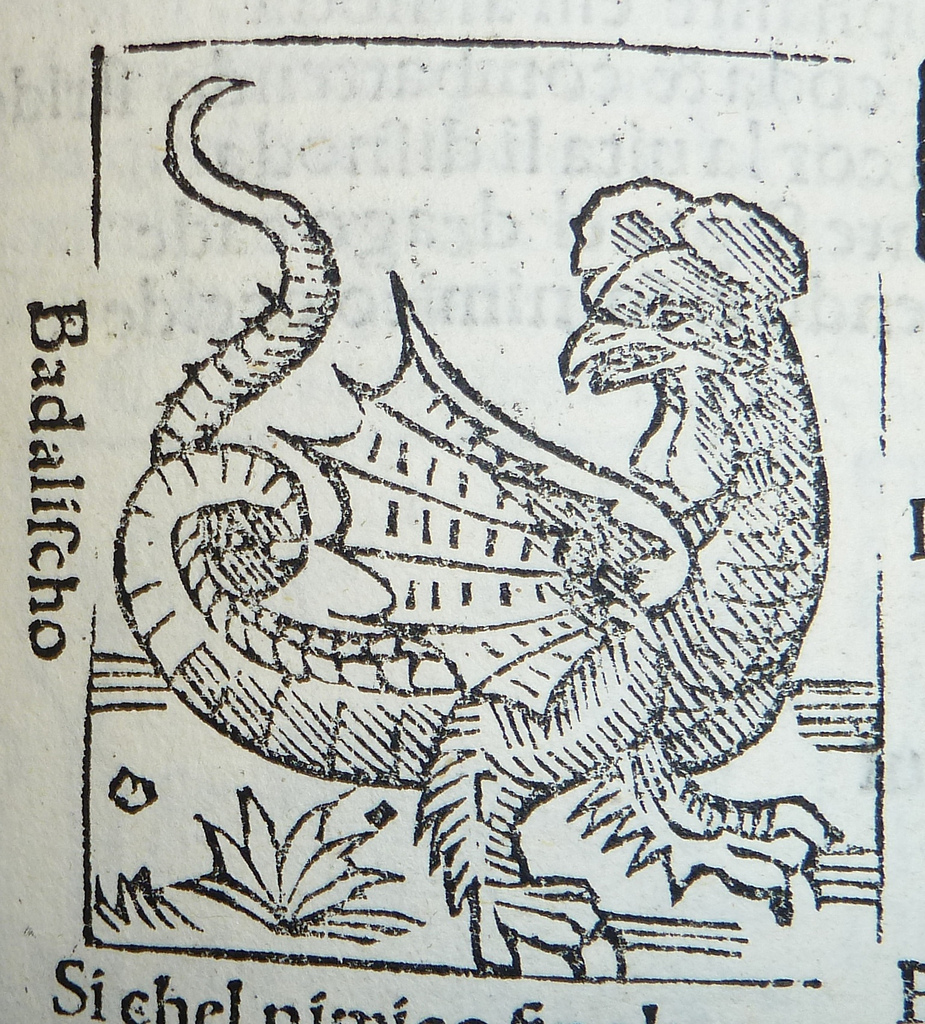 As you might recall, I’m re-reading Harry Potter, and each five chapters, I’m stopping to comment here. This post concerns chapters 6-10 of [amazon_link id=”0439064872″ target=”_blank” ]Harry Potter and the Chamber Of Secrets[/amazon_link].
As you might recall, I’m re-reading Harry Potter, and each five chapters, I’m stopping to comment here. This post concerns chapters 6-10 of [amazon_link id=”0439064872″ target=”_blank” ]Harry Potter and the Chamber Of Secrets[/amazon_link].
In chapter six, “Gilderoy Lockhart,” we see how Gilderoy Lockhart gets on as professor. The chapter begins with Ron’s mother sending a Howler. Question: if Neville received one from his Gran (which he ignored—”it was horrible”), then where were the trio? It must have happened when they were outside the Great Hall because Harry and Hermione don’t seem to know what it is.
I love Lockhart as a character. He’s so completely odious. This passage captures him well:
“Yes, I know what you’re thinking! ‘It’s all right for him, he’s an internationally famous wizard already!’ But when I was twelve, I was just as much of a nobody as you are now. In fact, I’d say I was even more of a nobody! I mean, a few people have heard of you, haven’t they? All that business with He Who Must Not Be Named!” He glanced at the lightning scar on Harry’s forehead. “I know, I know, it’s not quite as good as winning Witch Weekly’s Most-Charming-Smile Award five times in a row, as I have—but it’s a start, Harry, it’s a start.”
We also see the mandrakes in a great Herbology scene. I wish there were more of those, actually. Professor Sprout is funny and no-nonsense. Lucky for Hogwarts that she just happened to procure some mandrakes the year that everyone gets petrified, no?
Lockhart gives the class a quiz about himself, which Hermione aces. I am kind of dumbfounded that she checked her brains at the door when it comes to Lockhart. I guess even smart women are susceptible to the wiles of a handsome face. Sad. The quiz scene was cut in the movie version of the book, which is a shame because Kenneth Branagh is hilarious when he says that line about wanting to market his own line of hair-care potions. In fact, he is just simply brilliant as Gilderoy Lockhart. After the Cornish pixies tear apart the classroom, and Lockhart abandons Harry, Ron, and Hermione to clean up the mess, I love it that Hermione defends Lockhart—”You’ve read his books—look at all those amazing things he’s done…” and Ron replies, “He says he’s done.” Ron had the measure of Lockhart from the very start.
In chapter seven, “Mudbloods and Murmurs,” we learn the pejorative term for Muggle-born witches and wizards. I always hated what the film did with this part because they decided that Hermione already knew the word. In the novel, she says, when Hagrid expresses outrage over Malfoy’s insult, “I don’t know what it means. I could tell it was really rude, of course…” Naturally, Ron, who wound up with a slug attack when his wand backfired after he tried to curse Malfoy for calling Hermione a mudblood, knows exactly what it means. Another case when the films give a great line of Ron’s to someone else. In the book, it’s Ron who tells everyone about the whole pure-blood/Muggle-born deal. He adds, “Most wizards these days are half-blood anyway. If we hadn’t married Muggles we’d’ve died out.” On Pottermore, you learn that when Hogwarts was founded, Salazar Slytherin’s notion of pure-blood supremacy was unusual. It wasn’t until the International Statute of Secrecy in 1692 that some pure-blood families became mistrustful of Muggles (for good reason) and the idea that marrying Muggles would taint your blood took hold among a substantial number of wizards. In the 1930’s, a Pure-Blood Dictionary was published, likely by Cantakerus Nott (must be Theodore Nott’s grandfather or great-grandfather), with a list of the “Sacred Twenty-Eight” pure-blood families (my notes in parentheses):
- Abbott (Hannah’s family, known Hufflepuff)
- Avery (one of the Averys is a hapless Death Eater, known Slytherin)
- Black (Sirius’s family, including Narcissa Malfoy and Bellatrix Lestrange; fierce pure-blood pride, known Slytherins except for Sirius)
- Bulstrode (Millicent’s family, known Slytherin)
- Burke (Caractacus Burke ran Borgin and Burke’s, suspect Slytherin)
- Carrow (Amycus and Alecto Carrow are Death Eaters who wind up teaching at Hogwarts, suspect Slytherin)
- Crouch (Bartemius Sr. and Jr., suspect Ravenclaw)
- Fawley (as far as I know, no character in the series has this surname, no basis for House speculation)
- Flint (Marcus’s family, known Slytherin)
- Gaunt (Tom Riddle’s, aka Voldemort’s, mother’s family; most didn’t attend Hogwarts, but Riddle is known Slytherin, and they claim descent from Slytherin)
- Greengrass (Daphne Greengrass is in Harry’s year in Slytherin; Draco Malfoy later marries her little sister Astoria; known Slytherin)
- Lestrange (Rodolphus and Rabastan along with Rodolphus’s wife, Bellatrix; known Slytherin)
- Longbottom (Neville, Augusta—Neville’s gran—, and Frank and Alice, Neville’s parents; Great Uncle Algie might be a Longbottom, too; known Gryffindor, suspect Frank and Alice were Gryffindors, too)
- Macmillan (Ernie’s family, known Hufflepuff)
- Malfoy (a very old pure-blood family; Lucius and Draco, along with Lucius’s wife Narcissa; known Slytherin)
- Nott (Theodore Nott and his father, a Death Eater; known Slytherin)
- Ollivander (Garrick Ollivander, known Ravenclaw)
- Parkinson (Pansy Parkinson, known Slytherin)
- Prewett (Gideon and Fabian, members of the Order of the Phoenix who were killed; Molly Weasley was their sister, and thus, she was a Prewett by birth; Molly was a known Gryffindor, suspect Gideon and Fabian were, too)
- Rosier (Evan Rosier, a Death Eater; suspect Slytherin)
- Rowle (Thorfinn Rowle, a Death Eater; suspect Slytherin)
- Selwyn (Selwyn was a Death Eater; Dolores Umbridge claimed kinship with the Selwyns; Umbridge is a known Slytherin, suspect Death Eater Selwyn was, too)
- Shacklebolt (Kingsley Shacklebolt, suspect Gryffindor)
- Shafiq (this name is never used in the series, to my knowledge; no basis for House speculation)
- Slughorn (Horace Slughorn, Potions Master; known Slytherin)
- Travers (a Death Eater, suspect Slytherin)
- Weasley (of course, the famous “Blood Traitor” family; known Gryffindors)
- Yaxley (a Death Eater, suspect Slytherin)
Interesting how many of these families bought into the idea of pure-blood supremacy, and also of note is how frequently Slytherins are represented in this bunch, especially given Salazar Slytherin’s beliefs. Obviously not all families are in the same house—witness Sirius Black and the Patil twins. But the values of each family are probably passed on frequently enough that being in the same house is more common than it is rare, hence my speculation about possible houses above. Also interesting is the absence of the Potters. Harry’s father’s family is an old pure-blood family, and they descend from Ignotus Peverell. I speculate their absence from this list might be due to a regular infusion of Muggle-born spouses, including Lily. I think James’s parents were both probably a witch and wizard, and that neither was Muggle-born or Half-Blood, but I suspect they married into Muggle families at times, hence their exclusion from the list. We know their descent from the Peverell family is not a straight male line, so it stands to reason even the earliest Potter was a Muggle who married a witch.
It is also fascinating to me that wizards don’t seem to discriminate based on race or religion. Blood status is much more important to them than other signifiers of difference. Indeed, the Pottermore article notes that
A minority of these families publicly deplored their inclusion on the list, declaring that their ancestors certainly included Muggles, a fact of which they were not ashamed. Most vocally indignant was the numerous Weasley family, which, in spite of its connections with almost every old wizarding family in Britain, was proud of its ancestral ties to many interesting Muggles. Their protests earned these families the opprobrium of advocates of the pure-blood doctrine, and the epithet ‘blood traitor’. Meanwhile, a larger number of families were protesting that they were not on the pure-blood list.
The article also notes that families who adhered most closely to the pure-blood doctrine when marrying wound up with strains of mental instability in their families. Witness the Blacks (especially Sirius’s mother and Bellatrix) and the Gaunts. If you haven’t ever had a gander at the Black Family Tree, it’s a fascinating piece of wizarding lore. I will talk about it some more when I get to the chapter about the Black Family in [amazon_link id=”0439358078″ target=”_blank” ]Harry Potter and the Order of the Phoenix[/amazon_link].
Returning to the story, back at Hagrid’s hut, we learn something important about the Defense Against the Dark Arts post: Lockhart was the only person who applied for the job (or who agreed to take it, but I must say that if Dumbledore sought the guy out… well, he’s not always the best administrator, is he?). Hagrid says that “People aren’t too keen ter take it on, see. They’re starting’ ter think it’s jinxed. No one’s lasted long fer a while now.” Of course, we find out later it is jinxed, courtesy of Voldemort, who wanted it but was denied. Interesting notion: if Armando Dippet had still been headmaster instead of Dumbledore, how much you want to bet he’d have hired Voldemort? I seem to recall he tried to convince Headmaster Dippet to hire him right out of Hogwarts, but Professor Dippet said to wait and reapply when he was a little older. Of course, Dumbledore (and Voldemort, it should be noted) was a skilled Legilimens and already had the measure of Tom Riddle.
Another small detail (or two) often overlooked in this chapter: Hagrid sweeps a half-plucked rooster from the table and mentions he saw Ginny Weasley on the grounds—she claimed she was just looking around. Likely she had just killed that rooster. It would not be the last one she’d kill. The rooster’s cry is fatal to the basilisk, and Tom Riddle would take no chances.
Sure enough, Harry hears the basilisk for the first time while serving his detention, helping Lockhart answer his fan mail. Lockhart can’t hear it, which is strange. Harry tells Ron about the voice, and Ron says that he had a slug attack all over Special Award for Services to the School. Of course, that is Tom Riddle’s award for fingering Hagrid as the culprit in the last basilisk attacks, during which Moaning Myrtle was killed.
In chapter eight, “The Deathday Party,” the trio attends Nearly-Headless Nick’s Deathday Party. We also discover that Filch is a Squib, which explains why he never uses magic to clean up. Nick convinces Peeves to drop a Vanishing Cabinet on the floor, breaking it. Betcha that’s the same Vanishing Cabinet that Draco Malfoy spends most of sixth year repairing.
Another important note about this chapter: it forms the basis for all the dates in the Harry Potter series. Nearly-Headless Nick’s deathday is the only definitive date given: October 31, 1492. He tells Harry it’s his 500th deathday, which means that Harry is a second-year student in the school year 1992-1993. Going back, he was a first year in 1991-1992. Since he turned 11 in 1991, he was born July 31, 1980. All of the other dates in the series are based on this date, which is considered canon. Of course, none of the actual calendar dates will line up perfectly. For instance, term always starts on September 1, no matter what day of the week it is. Rowling has been famously unconcerned about maintaining that level of accuracy. It’s interesting to think that if Harry were really alive, he would be turning 33 this year, and it will not be for another four years that Albus Severus Potter and Rose Weasley go to Hogwarts, meaning right now, Albus Severus Potter is seven (depending on when his actual birthday is), and he would have been born in 2006, when Harry was 26 and Ginny was 25. This kind of dorky thing is fun for me to figure out.
Regarding the prospect of attending a deathday party, Hermione naturally sees it as a great learning experience, while Ron thinks it will be “dead depressing.” I happen to agree with Hermione in theory, but the end result was much closer to Ron’s prediction. Ron is pretty good about cracking some sort of joke or pun and then being right later. People forget about that when they just watch the movies instead of read the books, I think.
At the deathday party, Harry and Ron meet Moaning Myrtle. Later, when they are leaving, Harry hears the basilisk again, but this time they find a message written on the wall: “THE CHAMBER OF SECRETS HAS BEEN OPENED. ENEMIES OF THE HEIR, BEWARE.” Draco Malfoy rightly concludes, “You’ll be next, Mudbloods.” Of course, the trio naturally suspects Draco is the heir and culprit after this outburst, but he does reveal one interesting thing: he knows what the Chamber of Secrets is, and he knows that the monster within goes after Muggle-born witches and wizards.
In the next chapter, “The Writing on the Wall,” after Snape accuses Harry of hiding something, Dumbledore gave “Harry a searching look.” At that point, I am fairly certain he’s using legilimency on Harry, and that he has discovered Harry heard a voice. He would, of course, know all about the Chamber of Secrets, having been at the school when it was opened before.
Later in the chapter, we learn Ginny was really disturbed about what happened to Mrs. Norris, and Ron concludes it is because she’s a cat lover. Of course, we later learn it’s because she thinks she is responsible.
Because all the copies of Hogwarts: A History have been taken out, Hermione chances asking Professor Binns about the Chamber of Secrets in History of Magic. A pause here to reflect that this class could easily have been the most interesting and potentially one of the most important courses Harry took, but it’s dead boring instead. As a result, he never pays attention and we as readers learn precious little wizarding history. That is a pity!
Professor Binns tells the rapt students the story of the Chamber of Secrets, dismissing it as myth. The trio goes to Moaning Myrtle’s bathroom, on the trail of the Heir of Slytherin. As they are leaving, they see Percy, who takes five points from Ron. As far as I can recall, this is the only mention of a prefect taking points from one of the trio (or from any student). It’s a wonder it doesn’t happen more often, but then the students may have a “we’re all in this together” mentality that prevents a lot of points from being taken. Still, how do you keep the Slytherin prefects in check? If it meant winning the cup, they’d take points left and right. Doesn’t seem fair to me, unless prefects can ONLY take points from their own housemates for infractions. Then, it makes total sense.
Because Hermione pays attention in Potions, she remembers Snape’s remark about Polyjuice Potion and even the name of the book where the recipe can be found, but it’s in the restricted section, so the trio has to figure out how to get permission to check it out. After Hermione suggests that if they made it sound as it they were just interested in the theory, Ron accurately predicts, “Oh, come one, no teacher’s going to fall for that… They’d have to be really thick.”
Finally, in chapter ten, “The Rogue Bludger,” Harry is trying to keep Professor Lockhart in a good mood so he will sign off for permission to check out Moste Potente Potions. Lockhart offers to “pass on [his] expertise” in Quidditch to Harry, noting he likes to help out “less able players.” This man is the most ridiculous person. Harry is probably the single most gifted Quidditch player at the school. He’s the youngest player in a century.
At any rate, they manage to get the book, and Hermione is uncharacteristically determined to break the rules when Harry wonders if they might get in trouble.
The Quidditch match with Slytherin begins, and as you probably remember, a rogue bludger chases Harry all over the pitch. In spite of this fact, he still manages to grab the Snitch right under Malfoy’s nose—nearly. He winds up with a broken arm, and that idiot Lockhart vanishes all the bones in his arm when he tries to fix it. I love his response to his error: “Ah. Yes. Well, that can sometimes happen. but the point is the bones are no longer broken. That’s the thing to bear in mind.” That’s the thing to bear in mind? And Hermione still defends him! “Anyone can make a mistake,” she says.
Dobby manages to visit Harry that night in the hospital wing. He sure gets away from Malfoy Manor quite a lot for a house elf. Wizards think they can’t do that kind of thing, but it seems they are little more wily than wizards realize. Moments later, a petrified Colin Creevey is brought into the hospital wing, and Dumbledore himself says that the Chamber of Secrets has been opened again. Emphasis mine. And he says, “The question is not who… The question is how.” Dumbledore, therefore, knew Tom Riddle opened it last time, though Hagrid was blamed, and he knows it must be Tom Riddle this time, but as Voldemort is currently bodiless and roaming the forests of Albania, Dumbledore doesn’t know how. I contend that it is not until the diary is found and destroyed that Dumbledore works out that Voldemort made horcruxes.



